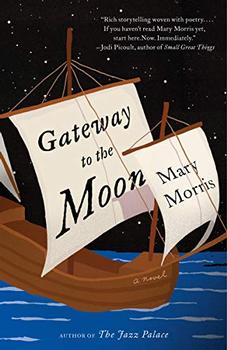Summary | Excerpt | Reading Guide | Reviews | Beyond the book | Read-Alikes | Genres & Themes | Author Bio

Alice Hoffman's latest work, The Marriage of Opposites, is a historical fiction novel focusing on the life of Rachel Pomie Petit Pizzarro, the real-life mother of famed Impressionist painter Camille Pissaro. In a first-person account, Rachel relays her life on the small island of St. Thomas in the Virgin Islands during the 19th century. She talks about her hopes and desires, of her relationship with her family and with her best friend Jestine, and how she first obeys tradition – and later defies it. As the book progresses, the story transitions to that of her youngest son, Jacobo (who prefers his middle name, Camille) as he grows into an adult with many of the same yearnings his mother experienced in her youth - particularly the longing to break free from convention and expectation.
Hoffman builds the narrative around many of the elements readers have encountered in her previous works: a strong, independent female Jewish protagonist; the intersection and overlapping of the lives of the women in the community; secrets of paternity and love; and just a touch of magical realism. The novel has its basis in history — the bare-bones of Rachel's life were well documented through letters, particularly between her and Camille. The setting, however, differs radically from Hoffman's other novels; the author brings to life the beauty and color of the tropical world into which Rachel is born.
Without a lot of action, the novel is driven by complex and convincing relationships, and reading about the characters' cares and perceptions is quite involving. Much of the story is told in the first person, authentically relaying Rachel's interactions. The author's ability to convey Rachel's voice is a true highlight, particularly in the realistic way the character's tone ages. When we first meet her, Rachel is determined and willful and sees magic in the world around her, but by the novel's end she's become sadder, quieter, a bit more bitter toward life in general but considerably more appreciative of her family. Early on, she describes how she copes with her frustrations at being stuck on the small island:
I spoke to the old ladies in the market and began to write down the small miracles common only in our country, For as long as I was trapped here, I would write down these stories, along with a list of the wondrous things I myself had seen...In our world there had been pirates with more than a dozen wives, parrots who could speak four languages, shells which opened to reveal pearls, birds as tall as men who danced for each other in the marshes, turtles that came to lay their eggs on the beach in a single mysterious night. On these occasions I would wait in the twilight with Jestine, watching as the shoreline filled with these lumber creatures, all so intent on their mission on the worn path they always took that they didn't notice us among them. We were turtle-girls. If we had been inside of a story we would surely have grown shells and claws. In silence, we studied the beach through the falling dark.
Camille's narration, too, has a depth that draws readers completely into his world as he describes his youth and early adulthood. Although Camille relates how his interest in painting developed and the frustrations of convincing others that art is not only his passion but a valid career, the novel doesn't delve much into Pissarro's technique, influences or his ultimate role as an early and respected Impressionist. The story really is predominantly Rachel's and she takes over the narration later in the book.
The novel has long sections of text that shift to the third-person perspective. While this makes sense in some instances — for example the chapters in which the focus moves away from Rachel to record her future husband's arrival on St. Thomas — in others, the action remains primarily on one of the two main characters, so this narrative choice is puzzling. It placed more distance than was necessary from the characters and caused me to become less engaged; I'd gotten used to "hearing" their voices and actually missed them when reading the third-person parts of the book.
Nevertheless The Marriage of Opposites is another fine addition to Hoffman's oeuvre and will please fans and new readers alike. Historical fiction aficionados in particular will want to pick up a copy.
![]() This review was originally published in The BookBrowse Review in August 2015, and has been updated for the
July 2016 edition.
Click here to go to this issue.
This review was originally published in The BookBrowse Review in August 2015, and has been updated for the
July 2016 edition.
Click here to go to this issue.

If you liked The Marriage of Opposites, try these:

by Amira Ghenim
Published 2025
A finalist for the 2021 International Prize for Arabic Fiction, a compelling saga of two families that illuminates the lives of women in modern Tunisia.

by Mary Morris
Published 2019
From award-winning novelist Mary Morris comes the remarkable story of a remote New Mexican town coming to grips with a dark history it never imagined.
Your guide toexceptional books
BookBrowse seeks out and recommends the best in contemporary fiction and nonfiction—books that not only engage and entertain but also deepen our understanding of ourselves and the world around us.